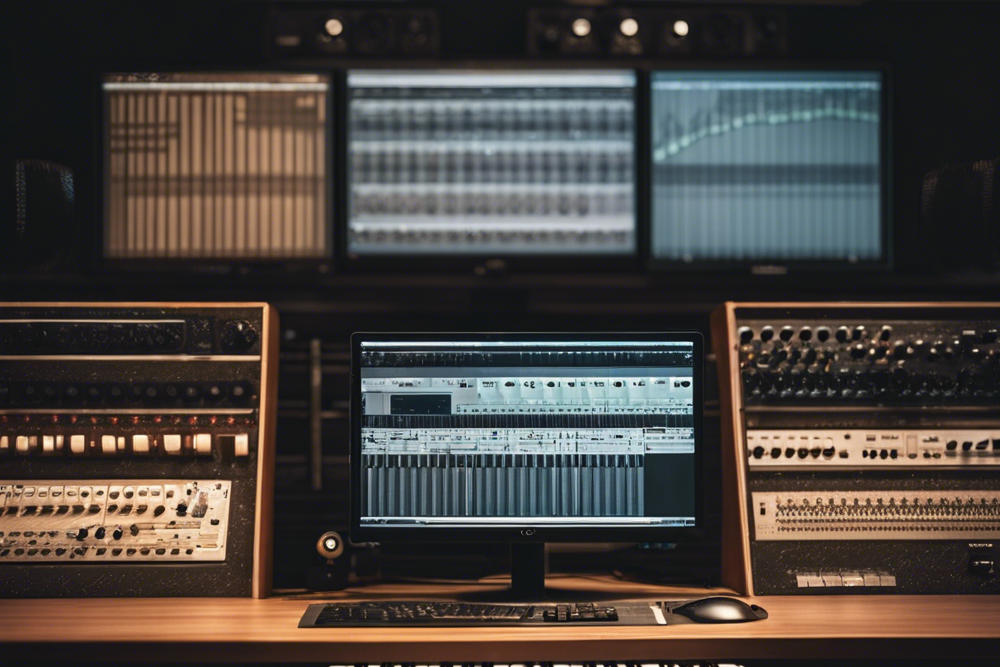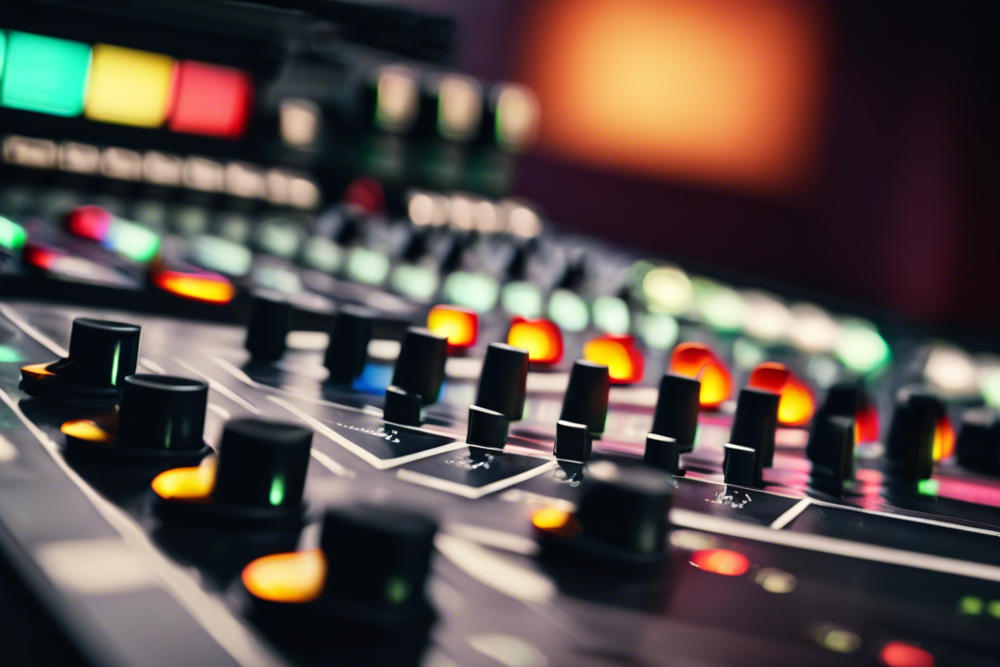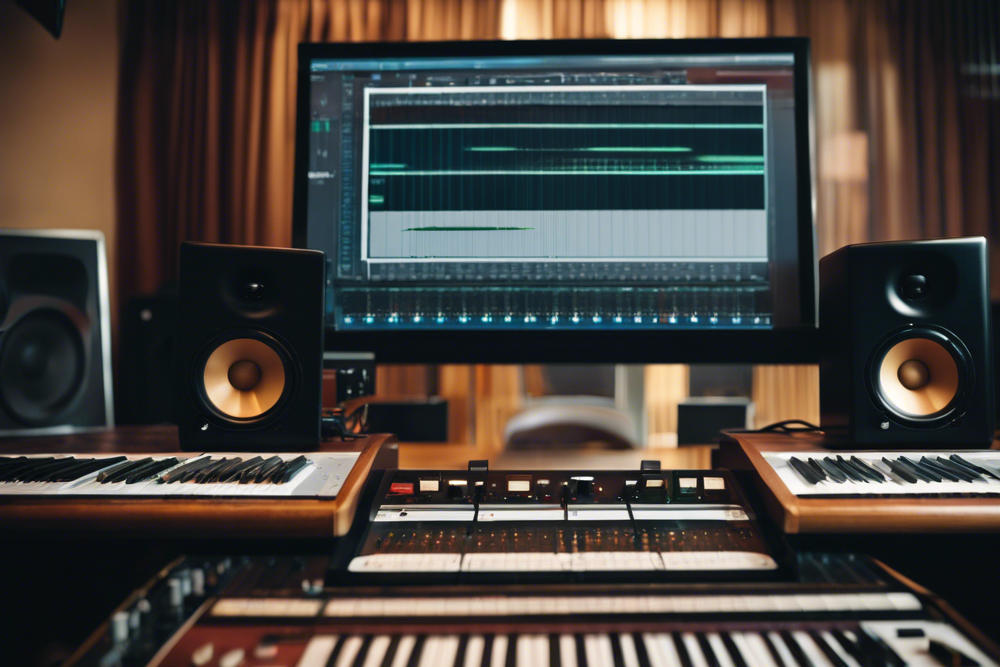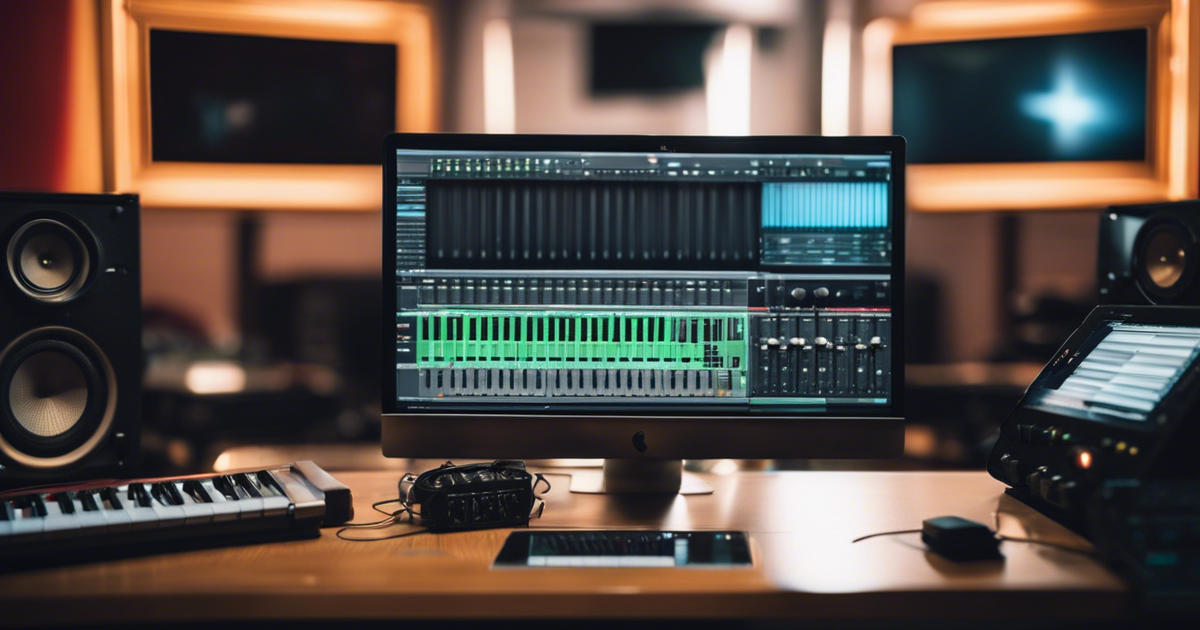Estimated reading time: 9 minutes
When it comes to adding depth and dimension to audio recordings, reverb is an essential tool. Whether you’re a musician, producer, or audio engineer, understanding the different types of reverbs can greatly enhance your creative process. In this guide, we will delve into the world of plate reverb and explore its unique characteristics and applications.
Table of contents
- Understanding Natural vs Artificial Reverbs
- The Science Behind Plate Reverb
- How Does Plate Reverb Work in Physical Spaces?
- Importance of Reverb Time in Plate Reverb
- The Contribution of Steel Plates in Plate Reverb Units
- The Role of Plate Reverb in Enhancing Vocal Tracks
- The Classic Sound: Original Sound vs Plate Reverb Sound
- Understanding the Reverb Tail in Plate Reverb
- Comparing Different Types of Reverb: Chamber, Digital, Spring, and Plate
- Benefits of Using Plate Reverb Plugins
- The Sense of Space Created by Plate Reverb in Guitar Amps
- Spotlight on Valhalla Plate and Other Popular Plate Reverb Tools
- The Role of Plate Reverb in Singing and Music Production
- Plate Reverb vs Delay: A Comparative Analysis
- Conclusion: Choosing the Right Type of Reverb for Your Needs
- FAQs
Understanding Natural vs Artificial Reverbs
Before we dive into plate reverb, let’s first distinguish between natural and artificial reverbs. Natural reverb occurs when sound waves bounce off surfaces in a physical space, such as a room or a concert hall. This creates a sense of ambience and spaciousness. On the other hand, artificial reverbs are generated electronically using digital algorithms or physical devices. Plate reverb falls under the category of artificial reverb, but it aims to replicate the natural reverberation found in physical spaces.
The Science Behind Plate Reverb
Plate reverb was first introduced in the 1950s as an alternative to bulky room-sized reverberation chambers. It consists of a thin metal plate suspended within a frame, typically made of steel. When an audio signal is sent through the plate, it vibrates and creates acoustic reflections. These reflections produce the reverberant sound that we associate with plate reverb. By adjusting the input and output transducers, as well as the damping materials, the characteristics of the reverb can be tailored to suit different musical styles and preferences.
How Does Plate Reverb Work in Physical Spaces?
To understand the inner workings of plate reverb units, let’s take a closer look at how it simulates the reverberation found in physical spaces. When a sound source, such as a vocal track or a guitar, is played through a plate reverb unit, the audio signal is sent to the plate via a transducer. The plate then vibrates in response to the signal, creating countless reflections that bounce back and forth. These reflections gradually decay over time, simulating the natural decay of sound in an acoustic space. Finally, the output transducer captures the reverberated sound and sends it back into the mix.

Importance of Reverb Time in Plate Reverb
One crucial aspect of plate reverb is the reverb time, also known as decay time. This refers to the length of time it takes for the reverberated sound to decay by 60 decibels. Reverb time greatly influences the perceived size and spaciousness of the audio. Longer reverb times create a more expansive and immersive sound, while shorter reverb times add a subtle touch of ambience. Plate reverb units typically offer a wide range of reverb time options, allowing users to dial in the perfect amount of decay for their desired sound.
The Contribution of Steel Plates in Plate Reverb Units
The steel plates used in plate reverb units play a crucial role in shaping the reverb characteristics. The thickness and size of the plate affect the resonant frequencies and the overall frequency response of the reverb. Thicker plates tend to produce longer reverb times and emphasize lower frequencies, while thinner plates result in shorter reverb times and a brighter tonality. Additionally, the material and quality of the steel plate can also impact the clarity and richness of the reverb. It’s important to note that different plate reverb units may utilize plates with varying characteristics, offering a diverse range of sonic possibilities.
The Role of Plate Reverb in Enhancing Vocal Tracks
Plate reverb has long been cherished for its ability to enhance acapella vocal tracks and add a sense of depth and warmth. When applied tastefully, plate reverb can breathe life into a dry vocal recording and make it sound more natural and spacious. By adjusting the reverb time, pre-delay, and diffusion parameters, you can create a reverb that complements the vocal performance and blends seamlessly with the mix. Experimentation is key, as different vocal styles and genres may call for different plate reverb settings.

The Classic Sound: Original Sound vs Plate Reverb Sound
One of the unique characteristics of plate reverb is its ability to impart a classic and vintage sound to audio recordings. Many iconic albums from the 1960s and 1970s utilized plate reverb units to achieve a distinct sonic character. The original sound of the source material is blended with the lush and enveloping quality of plate reverb, resulting in a rich and timeless sound. Plate reverb can transport listeners back in time and evoke a sense of nostalgia, making it a popular choice for musicians and producers seeking a vintage vibe.
| Aspect | Original Sound | Plate Reverb Sound |
|---|---|---|
| Clarity | Clear and direct | Enveloped in lush reverberation |
| Space | Close and intimate | Open and expansive |
| Depth | Limited depth | Enhanced depth and dimension |
| Character | Natural and straightforward | Classic, vintage, and atmospheric |
| Presence | Focused on source | Surrounding and ambient |
Understanding the Reverb Tail in Plate Reverb
The reverb tail refers to the lingering decay of the reverberated sound after the initial source has stopped. It is an essential component of plate reverb, as it contributes to the overall sense of space and depth. The length and character of the reverb tail can greatly impact the mood and atmosphere of a recording. A longer reverb tail creates a more sustained and ethereal sound, while a shorter reverb tail adds a subtle touch of ambience without overpowering the mix. Plate reverb units offer various controls to shape the reverb tail, allowing for precise tailoring to fit the desired sonic aesthetic.
Comparing Different Types of Reverb: Chamber, Digital, Spring, and Plate
When it comes to reverb, there are several other types worth exploring. Chamber reverb, similar to plate reverb, utilizes a physical space to generate reverberation. It involves sending the audio signal into a specially designed room or enclosure. Digital reverb, on the other hand, uses algorithms to simulate the characteristics of various physical spaces. Spring reverb, as the name suggests, utilizes coiled springs to create reverb. Each type of reverb has its own unique sound and characteristics, and experimenting with different types can open up a world of sonic possibilities.
| Reverb Type | Description | Characteristics |
|---|---|---|
| Chamber | Uses physical rooms for reverberation | Natural, rich, and dynamic reverbs |
| Digital | Simulated using algorithms | Versatile, customizable, and precise reverbs |
| Spring | Utilizes coiled springs for reverberation | Bright, metallic, and characteristic sound |
| Plate | Employs vibrating metal plates | Classic, warm, and lush reverbs |
Benefits of Using Plate Reverb Plugins
In the digital age, plate reverb plugins have become invaluable tools for musicians and producers. They offer the convenience of emulating the classic sound of plate reverb without the need for physical hardware. Plate reverb plugins allow for precise control over parameters such as reverb time, pre-delay, and EQ, enabling users to sculpt the perfect reverb sound for their recordings. Additionally, plugins often provide a wide range of presets that emulate different plate reverb units, giving users access to a plethora of sonic options.
The Sense of Space Created by Plate Reverb in Guitar Amps
Plate reverb is not only beneficial for vocals and general music production but also plays a significant role in enhancing guitar tones. When applied to guitar amps, plate reverb can add a lush and expansive quality to the sound. It creates a sense of space that can make a guitar part feel more alive and three-dimensional. Whether you’re playing clean arpeggios or shredding through heavy riffs, plate reverb can take your guitar tone to the next level and make it truly shine.
Spotlight on Valhalla Plate and Other Popular Plate Reverb Tools
When it comes to plate reverb plugins, one name that stands out is Valhalla Plate. Developed by a renowned German company, Valhalla Plate offers a wide range of plate reverb sounds, from vintage to modern. Its intuitive interface allows for effortless tweaking of parameters, making it a favorite among musicians and producers. Apart from Valhalla Plate, there are other popular plate reverb tools available, each with its own unique sonic characteristics. It’s worth exploring different options to find the plate reverb plugin that best suits your needs and creative vision.

The Role of Plate Reverb in Singing and Music Production
Plate reverb has found its place in various genres of music and has become an indispensable tool in the production process. From pop ballads to rock anthems, plate reverb can add a professional touch to vocal tracks, making them sound larger than life. It can create a sense of intimacy or grandeur, depending on the desired effect. Additionally, plate reverb can be used creatively on other instruments and elements in the mix, such as drums, pianos, and synths, to add depth and character. Experimentation and careful consideration of the overall sonic landscape are key to effectively utilizing plate reverb in music production.
Plate Reverb vs Delay: A Comparative Analysis
While plate reverb and delay share some similarities, they are distinct effects that serve different purposes. Plate reverb adds depth and ambience to audio recordings by simulating the reverberation found in physical spaces. Delay, on the other hand, creates echoes and repeats of the original sound, which can be used to enhance rhythmic patterns or create unique textures. Both plate reverb and delay have their place in music production, and understanding their differences can help you make informed decisions when it comes to applying effects to your recordings.
Conclusion: Choosing the Right Type of Reverb for Your Needs
When it comes to selecting the right type of reverb for your needs, it ultimately boils down to personal preference and the desired sonic outcome. Plate reverb offers a unique and classic sound that can elevate your recordings and add a touch of nostalgia. However, it’s important to experiment with different types of reverb, such as chamber, digital, and spring, to find the one that best suits your musical style and artistic vision. Remember, there are no hard and fast rules when it comes to reverb – it’s all about finding the perfect balance that complements your sound.
Related Posts
- What is a Reese Bass? Unraveling the Mystery
FAQs
Natural reverb occurs in physical spaces, while artificial reverb is generated electronically or through physical devices.
Reverb time refers to the length of time it takes for the reverberated sound to decay by 60 decibels.
Plate reverb units utilize a vibrating metal plate to create acoustic reflections that simulate natural reverberation.
Yes, plate reverb can enhance guitar tones and add a sense of space and depth to the sound.
Valhalla Plate is a renowned plate reverb plugin, but there are also other options available with unique sonic characteristics.
